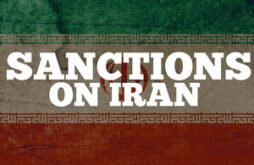RFL/RE – Iran says it has “indisputable” evidence that an unmanned U.S. surveillance drone it shot down on June 20 violated Iranian airspace.
Iran’s Foreign Ministry made the statement on June 21, just hours after U.S. media reported that President Donald Trump had approved and then canceled retaliatory military strikes against Iran.
Meanwhile, the U.S. envoy on Iran, Brian Hook, said it was “important we do everything” to deescalate tensions with Iran.
“Our diplomacy does not give Iran the right to respond with military force,” Hook said on June 21 in the Saudi capital, Riyadh. “Iran needs to meet our diplomacy with diplomacy and not military force.”
Reuters quotes Iranian government officials as saying that Tehran received a message from Trump via Oman overnight warning of an imminent attack on Iran and calling for talks.
The Iranian officials told Reuters that Supreme Leader Ayatollah Ali Khamenei was against having “any kind of talks” with the United States, but he would be given the message about the imminent attack.
The U.S. military says the $160 million unmanned surveillance aircraft was flying over the Strait of Hormuz in international airspace when it was shot down by an Iranian surface-to-air missile.
But Iran’s Islamic Revolutionary Guards Corps (IRGC) maintains it shot down a U.S. “spy” drone that had turned off its tracking equipment as it flew over Iran’s southern province of Hormozgan — saying the flight was a clear crossing of “our red line.”
In its June 21 statement, Iran’s Foreign Ministry said “even some parts of the drone’s wreckage have been retrieved from Iran’s territorial waters.”
Later, Iranian state TV released images of what it said were “retrieved sections of a U.S. military drone.” The photos showed what appeared to be the remains of a U.S. Navy RQ-4A Global Hawk, AP reported.





#Iran releases first images of pieces of downed US drone by #IRGC on Thursday morning.3910:20 AM – Jun 21, 201939 people are talking about thisTwitter Ads info and privacy
General Amir Ali Hajizadeh, the head of the IRGC’s aviation division, told Iranian state TV on June 21 that Iranian forces warned the U.S. military several times before launching a missile at the drone.
“Unfortunately, they did not answer,” he said.
Hajizadeh also said the debris of the drone in the photos broadcast by state TV had been collected from Iran’s territorial waters.
“We hope that our enemies do not make such mistakes again,” Iranian Foreign Ministry spokesman Abbas Musavi said in an interview with state broadcaster IRIB on June 21. “We have informed the UN and lodged a protest there against this clear and provocative violation of the United States.”
Meanwhile, major international airlines — including British Airways, Australia’s Qantas, Dutch carrier KLM, and Germany’s Lufthansa — said they were suspending flights over the Strait of Hormuz.
The move came after the U.S. Federal Aviation Administration issued an emergency order banning U.S. carriers from flying in Iranian airspace over the Strait of Hormuz and Gulf of Oman.
Retaliatory Strikes ‘Abruptly’ Called Off
The downing of the drone came amid escalating tensions between Tehran and Washington. The United States has blamed Tehran for a series of attacks on oil tankers near the Strait of Hormuz — including two tankers that were attacked in the Gulf of Oman on June 13.
The New York Times reported that Trump had approved military strikes against Iran but it said he “abruptly” called off the mission during the night of June 20.
The Times report said that as late as 7 p.m. on June 20 — after “intense discussions and debate” at the White House — military and diplomatic officials were expecting a strike.
Trump’s top national-security officials and congressional leaders were involved in the discussions, according to the Times, which cited multiple senior administration officials involved in or briefed on the talks. It did not identify the officials.
According to a U.S. official who spoke to AP, the strikes were recommended by the Pentagon and were among the options presented to senior administration officials.
Officials said Trump had initially approved attacks on several Iranian targets, including radar and missile batteries, the Times reported.
The report said the strike was to take place just before dawn on June 21 to minimize the risk to Iranian military personnel or to civilians.
One senior administration official said the operation was under way in its early stages when it was called off.
The Times was told by the official that planes were in the air and ships were in position, but no missiles had been fired when word came to call off the mission.
The paper said it was not clear whether Trump “simply changed his mind on the strikes or whether the administration altered course because of logistics or strategy.”
The Times said White House and Pentagon officials declined to officially comment on the report. But it added that no administration official asked the paper to withhold the article.
Trump gave two apparently contradictory indications regarding the incident.
Early on June 20, he wrote on Twitter that “Iran made a very big mistake” by shooting down the drone.
Asked whether the United States would strike Iran in retaliation, “You’ll soon find out,” he said.
Hours later, however, he appeared to play down the incident, saying it likely was an error by “a general or somebody.”
“I think probably Iran made a mistake — I would imagine it was a general or somebody that made a mistake in shooting that drone down,” he told reporters at the White House.
“We had nobody in the drone. It would have made a big difference, let me tell you, it would have made a big, big difference” if the aircraft had carried a pilot, Trump said as he met Canadian Prime Minister Justin Trudeau at the White House.
 Shabtabnews In this dark night, I have lost my way – Arise from a corner, oh you the star of guidance.
Shabtabnews In this dark night, I have lost my way – Arise from a corner, oh you the star of guidance.


